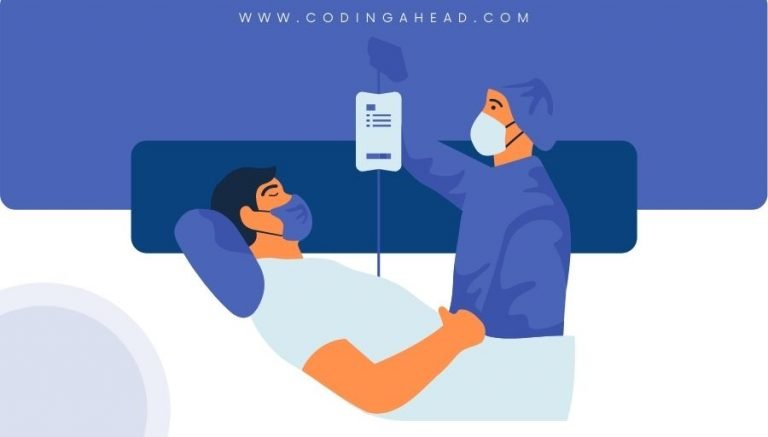X Modifiers List (2023) – Descriptions, Billing Guidelines & Examples
Modifier XE, Modifier XS, Modifier XP & Modifier XU are created for billing certain codes at high risk for incorrect billing even though it still recognizes modifier 59. Descriptions and examples of Modifier XE, Modifier XS, Modifier XP & Modifier XU can be found below.
The Current Procedural Terminology (CPT) instructions state that modifier 59 should not be used when a more descriptive modifier is available.
For example; a particular NCCI PTP code pair may be identified as payable only with the -XE separate encounter modifier but not modifier 59 or other X modifiers.
The X modifiers are more selective versions of the modifier 59 so it would be incorrect to include both modifiers on the same line.
The combination of alternative specific modifiers with a general less specific modifier creates additional discrimination in both reporting and editing.
As a default, at this time CMS will initially accept either a modifier 59 or a more selective X modifier (Modifier XE, Modifier XS, Modifier XP & Modifier XU) as correct coding, although the rapid migration of providers to the more selective modifiers is encouraged.
However, please note that these modifiers are valid even before national edits are in place.
MACs are not prohibited from requiring the use of selective modifiers in lieu of the general modifier 59, when necessitated by local program integrity and compliance needs.
The primary issue associated with Modifier 59 is that it is defined for use in a wide variety of circumstances, such as to identify:
- Different encounters;
- Different anatomic sites;
- Distinct services.
List Of X Modifiers
CR8863 provides that CMS established the following four X modifiers (referred to collectively as –X{EPSU} modifiers) to define specific subsets of modifier 59.
Modifier XE
Modifier XE tells the payer that the service is distinct because it occurred during a separate encounter on the same date of service as the bundled procedure.
Description of Modifier XE:
The CPT manual defines Modifier XE as: “Separate Encounter, A Service That Is Distinct Because It Occurred During A Separate Encounter.”
Modifier XE Example
The modifier XE example underneath tells the payer that the procedure performed in the ER was a separate encounter from the diagnostic nasal endoscopy performed that same day in the office.
The patient sees the otolaryngologist in the morning, at which time the doctor performs an evaluation and management (E/M).
During the visit, the patient complains of nasal congestion and headaches and the doctor performs a diagnostic nasal endoscopy.
The visit is coded: CPT 99213-25. Office or other outpatient visit for the evaluation and management of an established patient, which requires at least 2 of these 3 key components:
- An expanded problem focused history;
- An expanded problem focused examination;
- Medical decision making of low complexity.
That evening, the patient experiences a severe nosebleed and goes to the emergency room (ER). The ER physician is unable to stop the bleeding and calls the otolaryngologist in.
The otolaryngologist comes to the ER and performs an extensive control of the nasal hemorrhage with packing.
This encounter in the ER for the otolaryngologist is coded: CPT 30903 (Control nasal hemorrhage, anterior, complex (extensive cautery and/or packing) any method) CPT 30903 is a National Correct Coding Initiative (NCCI) Column 2 code for CPT 31231, meaning the two codes are bundled and not separately payable.
Modifier XS
Modifier XS tells the payer the procedure is distinct because it was performed on a separate organ or structure than the bundled procedure.
Description Of Modifier XS:
The CPT manual defines Modifier XS as: “Separate Structure, A Service That Is Distinct Because It Was Performed On A Separate Organ/Structure.“
Modifier XS Example
Modifier XS or Modifier 59 is needed in the example underneath to break the bundle. Modifier LT and Modifier RT seem to be enough, telling the payer that the two procedures were performed on two different sides, but not all payers allow modifier LT and modifier RT to break a bundle.
Example: The patient arrives at an orthopedist for a knee injection with ultrasound guidance on the left knee and an aspiration of the right knee without ultrasound guidance.
The visit is coded as follows.
CPT 20611-LT (Arthrocentesis, aspiration and/or injection, major joint or bursa (eg, shoulder, hip, knee, subacromial bursa); with ultrasound guidance, with permanent recording and reporting -Left side)
CPT 20610-XS-RT (Arthrocentesis, aspiration and/or injection, major joint or bursa (eg, shoulder, hip, knee, subacromial bursa); without ultrasound guidance -Right side)
CPT 20610 is a Column 2 code for CPT 20611.
Modifier XP
Modifier XP tells the payer that the service is distinct from the bundled service because it was performed by a different practitioner.
Description of Modifier XP
The CPT manual defines Modifier XP as: “Separate Practitioner, A Service That Is Distinct Because It Was Performed By A Different Practitioner.”
Modifier XP Example
Modifier XP is used in the example underneath to break the bundle.
Example: A colorectal surgeon performs CPT 44147 (Colectomy, partial; abdominal and transanal approach while another surgeon in the group performs) CPT +38747 (Abdominal lymphadenectomy, regional, including celiac, gastric, portal, peripancreatic, with or without para-aortic and vena caval nodes) (List separately in addition to code for primary procedure).
CPT +38747 is a Column 2 code of 44147, but since a different physician performed this procedure, modifier XP is used to break the bundle. Coding is: CPT 44147, CPT 38747-XP.
Modifier XU
Modifier XU tells the payer that the service is distinct because it does not overlap usual components of the main service.
Description of Modifier XU
The CPT manual defines Modifier XU as: “Unusual Non-Overlapping Service, The Use Of A Service That Is Distinct Because It Does Not Overlap Usual Components Of The Main Service.”
Modifier XU Example
The XU modifier is used in the example underneath.
Example: The otolaryngologist performs a rigid diagnostic nasal endoscopy for nasal complaints, and then pulls out the rigid endoscope and performs a flexible laryngoscopy to evaluate the patient’s complaints of coughing, throat clearing, and difficulty swallowing.
A nasal endoscopy and flexible laryngoscopy are not usually both coded and charged during the same encounter because the same scope can be used for both diagnostic procedures.
CPT 31231-XU: Nasal endoscopy, diagnostic, unilateral or bilateral (separate procedure)
CPT 31575: Laryngoscopy, flexible; diagnostic
CPT 31231 is coded whether a rigid endoscope or a flexible endoscope is used, and it’s a Column 2 code of CPT 31575. Interestingly, CPT 31231 has more relative value units (RVUs) than CPT 31575, and should be listed first.



